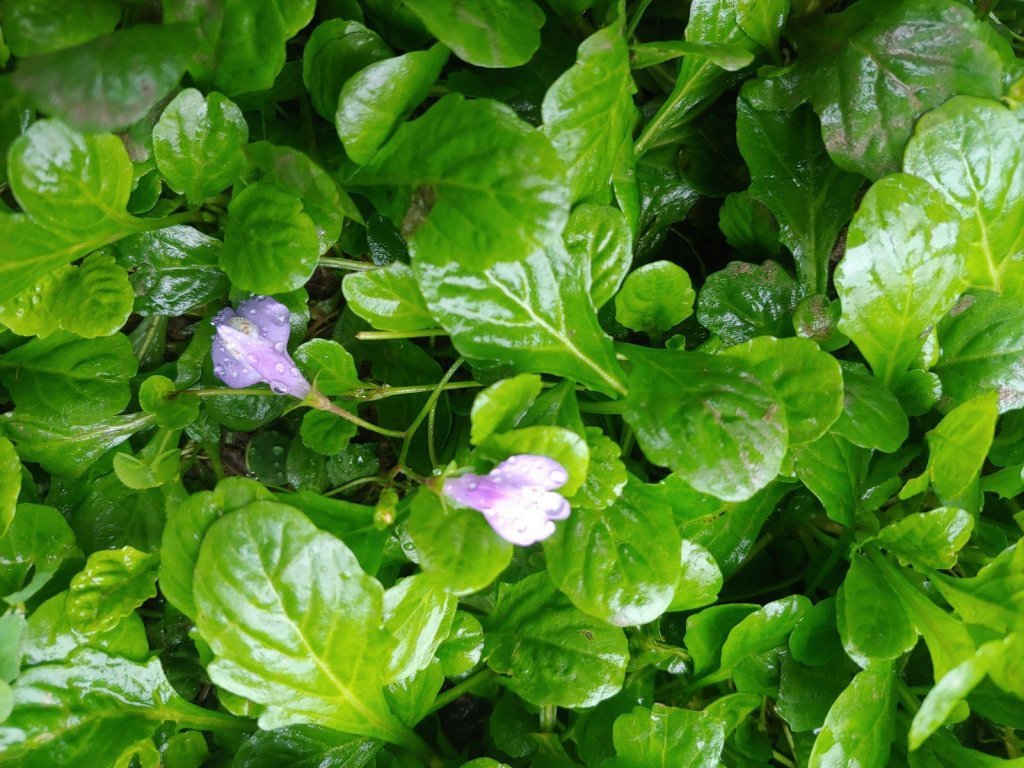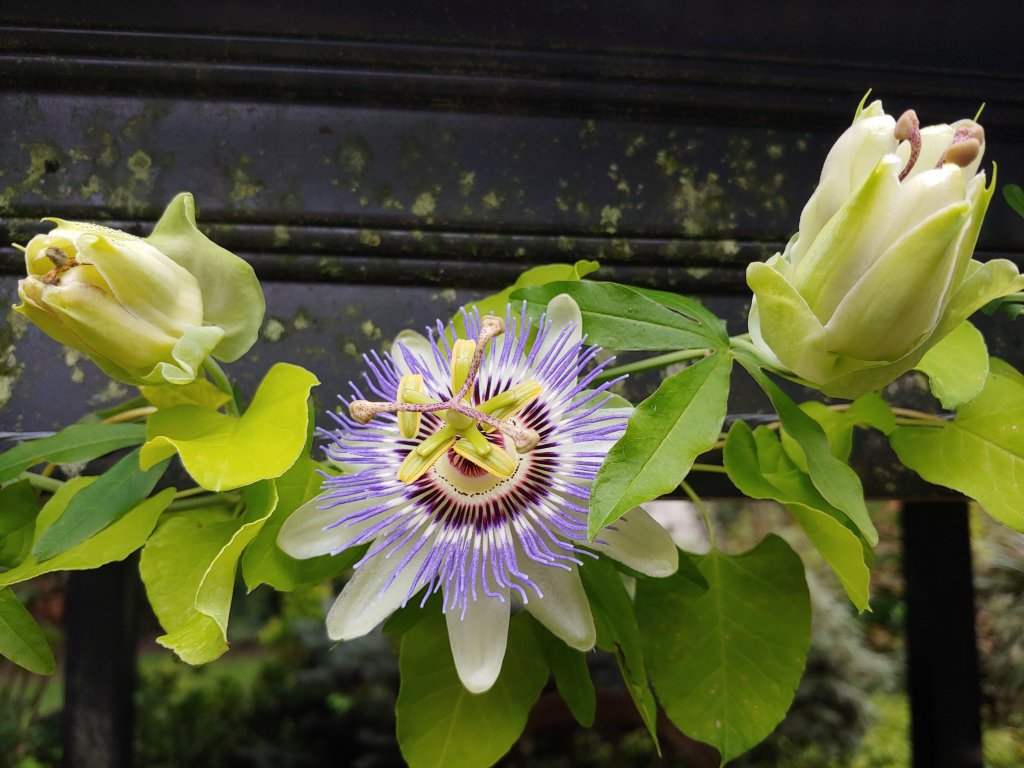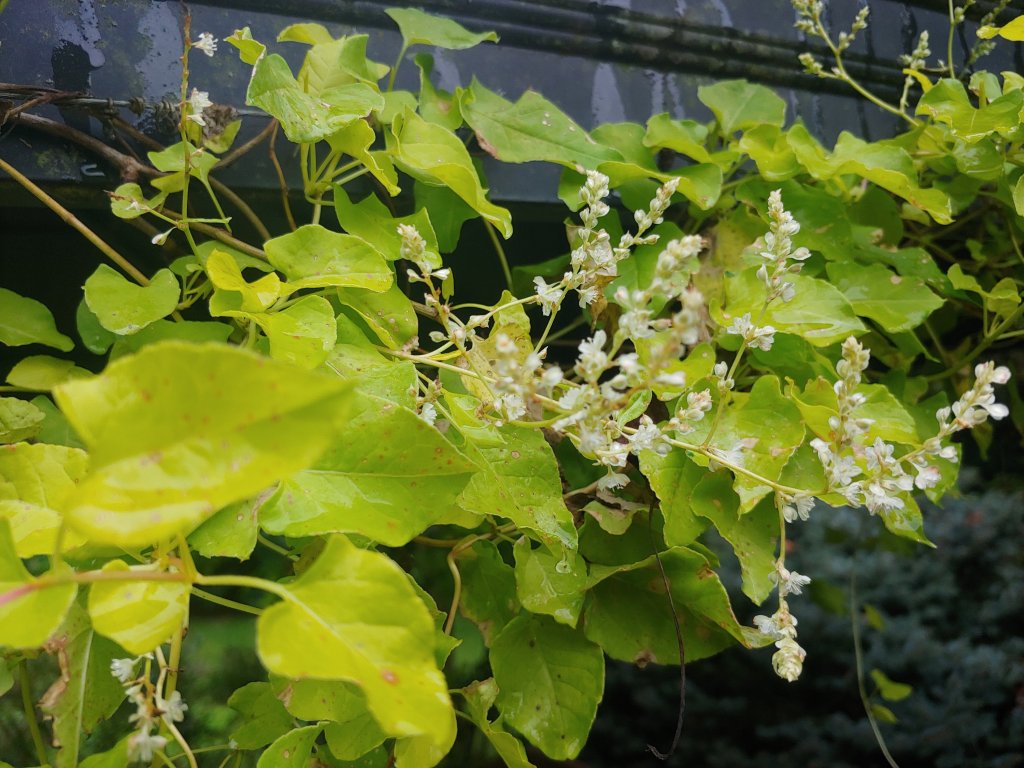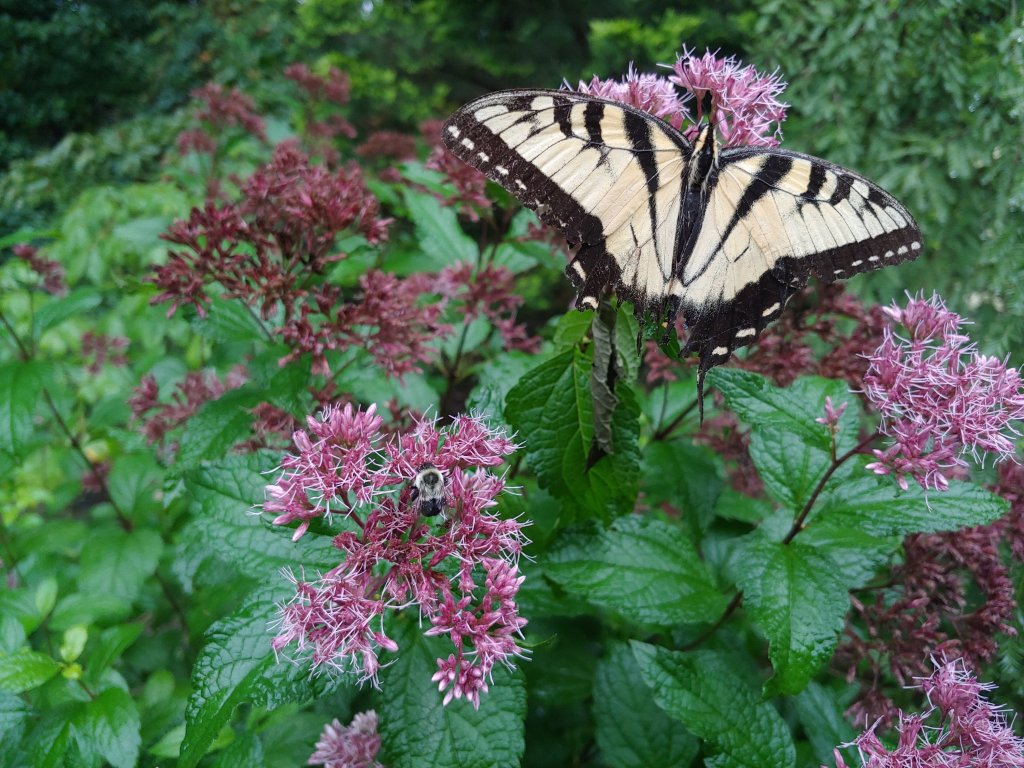September, thankfully, promises fewer extremes, in temperature and rainfall. Undoubtedly, the change of season will deliver milder weather, though the heat of summer might sneak in for a few days. Hopefully, not longer.
Today there is a gentle rainfall while I write under the cover of the summerhouse. This is not the deluge of tropical storms and repeated thunderstorms so frequent in August, but an ideal complement to maintain soil moisture.

This morning a ‘Spider’s Web’ fatsia, struggling in damp ground, was dug out and set in a container, hopefully to revive before an ideal home is discovered. While another (above) thrives in part sun, I search for a similar location for the second. Both have survived the two recent very mild winters without protection, though I must not become complacent and remain prepared for the next drop near zero (Fahrenheit). While nearly cold hardy, the fatsias add a tropical feel to the garden. Also, I am regularly seduced by large leaves.

Today, I am slightly conflicted by mazus (Mazus reptans, above) that has seeded profusely into the gravel path from the driveway to the rear garden. This slightly weedy ground cover has invaded the shabby rear lawn, to my delight. Wide spreading patches are often unnoticed beneath taller perennials and shrubs, but its spread by drainage is clear. I have planted the edges of the gravel with creepers that will soften its margins, and certainly mazus will do this more quickly. It is simple to remove at this tender stage, but I think for now it will stay. The gravel was laid without a fabric barrier for this purpose, but still I second guess.

My wife and a visiting friend first noticed a single passionflower (Passiflora caerulea) along the roofline of the summerhouse yesterday. There were two more around the corner (and others earlier in the week), and the first white blooms of the silver lace vine (Fallopia baldschuanica ‘Lemon Lace’, below) on the far side. This yellow leafed silver lace was planted with the promise that it would not be quite as vigorous as its green leafed cousin, but still it demands regular snipping to tame its roaming. This is easily accomplished several times each week, and this summer the vine has reached the limits of wires strung along two rooflines of the summerhouse. Next year might require more radical pruning, but I have no regrets, so far.

Tall flowers of native Joe Pye weeds that seeded into the shallows of the koi pond arch into the water. The spent flowers, waterlogged by August’s storms, add a more untidy appearance than is usual to the wild edges of the pond, but growth is so dense that difficult access discourages doing anything about it. Certainly, there are no manicured parts of the garden, so this untidiness is not shocking.

I am happy when I read that you have some of the same problems that I have. My mazus, two years old, has completely covered my large stepping stones and are spreading into nearby grass areas. I think I’ll just let it do its thing, because the flowers in the spring are very pretty, and my lawn service guys will cut the grass along with the spreading mazus. So far, it’s not too big of a problem. My Joe Pyeweed is going to seed, so I chopped it off so that it doesn’t spread. I haven’t seen any birds or bees on it, otherwise I wouldn’t chop it off. Are you chopping off your Joe Pyeweed; from your blog, it looks like you’re just letting it be.
The only problem with mazus as a lawn substitute is that it doesn’t wear well under foot traffic. So, I walk around it. I do not cut the seed heads of Joe Pye weeds, so I get volunteer seedlings. Some stay, some are pulled. The ones around the koi pond are tall natives, but ones I’ve planted are smaller ones like ‘Little Joe’. I’ve seen a few tall seedlings, and others that might be taller if the deer didn’t nip them in late spring. The pruning by deer also delays flowering, so there are several Joe Pyes just beginning to flower. The number of swallowtail butterflies feeding on the Joe Pyes seems about average this year, but now that mountain mint is past bloom all but the carpenter bees have moved on.
Mazus is the devil! Pull out as much as you can! This was recommended by a landscaper 20 years ago and I still can’t kill it. Invades the lawn and flower beds
I understand how it can be a nuisance in both lawn and garden beds, but clover or mazus are acceptable in my lawn, and with the abundance of plants in the garden mazus can’t spread too far.
I’ll keep an eye on it, good to know. In the meantime, I’ll plant extra plantings in my bordering gardens, like Dave did. Hopefully that will help keep my mazus in check. Thanks for the advice! (I’m quickly learning that no matter how many plants I plant, the weeding chore is endless! ugh.) Dave: I wish we could see a birds eye view of some of your gardens! Maybe some drone photos!
Passion vine is perplexing. The flower in your picture is probably the most popular, perhaps because it is so difficult to kill. The vines die back when they get dry, but then regenerate after winter. Anyway, I thought that it was an ‘ornamental’ cultivar. Fruiting cultivars are not as prolific with bloom, and the flowers of some are not quite as ornate. However, the ‘ornamental’ type like yours is what is naturalized in Beverly Hills (in Los Angeles County), supposedly because they were grown there for fruit many years ago. My colleague tried for many years to kill one that grew from cracks in the foundation. It was very resilient, and might still be there now. Since they produce only a few fruits, and are not a notably productive cultivar, I sort of doubt that they are related to the fruit producing sort that used to live there.
Passionflowers are easy to kill here. A hardier variety faded and perished in competition with neighbors, and this one can be killed by leaving it outdoors through any average winter, presuming we ever get one.
Yes, I remember that they dislike frost. I think that they can succumb to frost in cooler spots nearby, but I have never seen it happen. They grow like weeds.